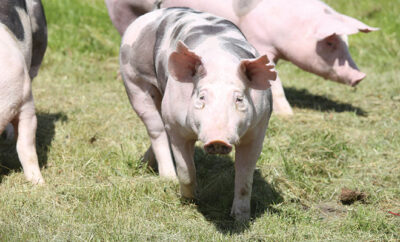
Jerky: The New Artisanal Treat
I recently volunteered for a very fun job–creating a care package for a high school pal who is stationed overseas in Afghanistan. This task led me to search for delicious snacks far and wide.
It’s challenging to pack as many goodies into a priority mail box as you can, while shopping for items that provide a big punch of flavor. I wanted to buy things that not only tasted great, but were also healthy. My quest led me to a grocery store specializing in natural foods. This opened my eyes to some new products, not the least of which was jerky.
I’ll admit I’ve never been a huge fan of jerky, at least as it used to be marketed. I remember seeing slim shrink-wrapped packages of jerky at checkout stands at grocery stores and hardware stores. But my most vivid memories are of stops at gas stations during vacations and road trips. It seemed that jerky products always had pride of place somewhere between individually wrapped spicy dill pickles ($1 each!), bags of chips and fail-safe hangover cures. This made jerky products stand out from carbs, and travelers in need of a quick burst of energy on the road were able to grab this snack on the run.
This brings me back to my trek walking the aisles of a store devoted to natural foods. Given that my preconceived notions of jerky were very limited, imagine my surprise to find that there is now artisanal, hand-made jerky. Forget beef, pork or turkey; these treats are now made of alligator, alpaca, buffalo, duck, elk, fish, kangaroo, ostrich, salmon, snake, trout, tuna, venison, wild boar and yak, among other proteins.
How did jerky evolve from a cheap product to high-end artisanal treats? One answer is that jerky is a perfect solution for current diet trends. People who commit to low-carb, high-protein or paleo diets value quick, easy-solution snacks. Jerky fits this need perfectly, as it is gluten free, low glycemic and low fat. But there are a couple of other reasons that jerky has become popular.
The first has to do with how the jerky is processed. The salty jerky that I remember from road trips was made of very fatty, cheap cuts of meat. Processing cheap protein required a lot of additives such as salt and preservatives. In contrast, the more expensive jerky products in health food stores is perceived more as a whole food. There are very few ingredients, with fewer additives and preservatives, when jerky is made from quality, low-fat proteins.
And the second reason? The high-end products are sold in small, attractive packages that are easily stowed away in purses, pockets and carry-on bags. Those long slim sticks of jerky from the past were great to consume immediately. But they didn’t fit neatly in a pocket, handbag or a packed lunch. The newer high-end jerky products are packed into lunches, briefcases and travel bags.
This makes sense because, after all, jerky was traditionally valued for its portability. Slowly dried meat could be made at leisure. Because dried meat weighs much less than fresh meat, jerky was easy to pack up for travel over long-distance trips. Thus, dried meats became a perfect solution for delivering high-protein energy food to people on the move
One of the first such trail foods was made by Native Americans–pemmican. This was a combination of ground venison or bison combined with fat and dried fruit, berries, nuts or beans. Native American woman could process these foods in large quantities, using hand-sewn rawhide bags to store slabs of dried meat mixed with melted fat, berries and nuts. This meant food could be stacked and stored, and even buried underground, without spoiling; sometimes pemmican could last for a few years when properly stored. In days before refrigeration, this was a huge advantage when there was no other way to preserve food for long periods of time.
If you think that jerky is limited to meat products, you should know that there are options. For people who limit their protein consumption to fish, consider salmon jerky, a delicious option that is often dried by being smoked over alder wood fires. And there are other non-meat jerky options. If you prefer vegan, all-natural, gluten-free and non-GMO products, there is a wide variety of soy jerky products you can sample.
Many people enjoy making homemade jerky using an oven or a dehydrator. Some of my hunting friends make their own jerky on the spot, on hunting and fishing trips, while camping. I always advocate making food from scratch, but the thumbs-up report on the jerky that I got from the recipient of that care package proves this exception to that rule, This is one instance in which processed food made from premium, healthy ingredients rivals homemade in quality. ■
Sources: connoisseurusveg.com, mountainamericajerky.com and A. D. Livingston, Jerky, Lyons Press, Guilford, Connecticut, 2001.







